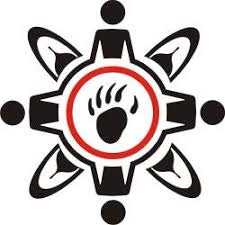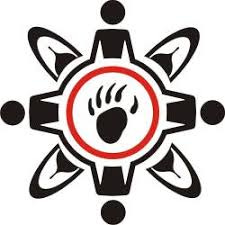RCAP - Canadian Royal Commission on Aboriginal Peoples. A note on the Four Periods of Relationship with Canada
August 16, 2024
The Royal Commission on Aboriginal Peoples report of 1996[1] divides Canada’s history into four periods that reflect the nature of the relationship between colonists/settlers and Canada’s indigenous peoples. Those four periods are:
Stage One: Separate Worlds
Stage Two: Contact and Cooperation
Stage Three: Displacement and Assimilation
Stage Four: Negotiation and Renewal
Canadian history is decidedly different than that of other colonial societies and in particular is different than the history of relationships between the indigenous people of the United States of America. Those differences are the result of many factors including geography, politics, and economics. For example, in the U.S. the general paradigm is that the indigenous people were pushed into submission through conquest and violence (war). From the early days of the original thirteen colonies the American states had designs on western expansion. In fact, for land developers like George Washington, the Royal Proclamation of 1763, which granted aboriginal title to all unceded lands was a significant factor that led to the American revolution and separation from Great Britain.
As the American colonies were declaring their independence there was already a significant distinction in the economies of the two countries. The American colonies were relatively advanced in terms of the development of an agricultural base that supported a diverse economy that included not only mercantile trade but also a fledgling manufacturing sector. The U.S. population was rapidly growing and needed space to continue with its progress as an emerging power. Canada on the other hand had only a small agricultural base and remained largely focused on the fur trade and the extraction of other resources (e.g. fishing and lumber).
The future prospects of an expanding economy made the U.S. colonies an attractive destination for colonists even before independence was declared. The U.S. was very much a product of early and rapid expansion through emigration. So much so that it adopted an approach of pushing indigenous people farther westward through force and intimidation. The Royal Proclamation very much was in part a recognition of the rights of indigenous people and in part a constraint on U.S. colonists to contain them.
Meanwhile in Canada the relationship was one of cooperation. In very general terms many of the newcomers in Canada had come to temporarily pursue commercial interests and there were few settlers who were intent on establishing new colonies. The fleeting nature of the commercial endeavours made cooperation between indigenous people and Europeans desirable and seemingly profitable for each.
For many of the European newcomers the symbiosis developed between them and the indigenous tribes was a sincere and a good-willed effort at economic cooperation. Nevertheless, there were many unforeseen and horrific consequences for the indigenous people that forever changed the cultural landscape of what became Canada.
The newcomers brought diseases like small pox for which indigenous people had no immunity. As a result, thousands died of the disease. The introduction of fur trading at first led to indigenous people acquiring tools and other objects that had previously been unknown to them. However, over time this economic shift led to a depletion of the fur stock and over saturation of the European markets. As the fur trade fell off, Canada’s indigenous people did not have ready alternatives to fill the gap. Moreover, their culture as hunter-gathers was no longer viable because of the depletion of wildlife.
The sad reality of Canadian history though is seen through the transition from Stage 2 (Contact and Cooperation) to Stage 3 (Displacement and Assimilation). The economic shifts meant the Europeans were no longer dependent on indigenous people as partners in trade. In addition, after the war of 1812 political events led to the development of self-government in Canada and the beginning of an independence from Great Britain. In particular, in response to settler rebellions in 1837 demanding greater democracy in both Lower Canada (i.e. Quebec) and Upper Canada (i.e. Ontario) the British government commissioned Lord Durham to produce a report regarding governance of the colonies.
This report, titled the Report on the Affairs of British North America (1839) led to a series of reforms and changes. These included uniting the two Canadas into a single colony, the Province of Canada in 1841, which was aimed at reducing the influence of French-Canadian culture to mitigate against the threat of further uprisings in Lower Canada. However, the more important recommendations Durham made was to introduce responsible government for the colonial governments to ensure greater accountability to the electorate and to eliminate the dominance of a political elite.
It wasn’t until 1847 that Britain granted local self-government to the colonies. This was because a newly elected government in London was eager to reduce international spending. In 1848, Reformers in Nova Scotia, established the first responsible government in the British Empire. This was followed by adoption of responsible government in Canada (i.e. Quebec and Ontario), New Brunswick, Newfoundland and PEI.
The Durham Report and subsequent political moves led to the development of Canadian democracy and the evolution of Canada’s political independence from Britain. It also led to the development of a platform for Canadian politicians in the then Province of Canada, New Brunswick, Nova Scotia and PEI to form a confederation in 1867. This was a a strategy not only a strategy of independence but importantly was designed to resist annexation by the American colonies and preserve the connection with Great Britain.
An important part of 1867 confederation was the desire to include the distant colony of British Columbia which saw the benefits of being part of the newly created Dominion of Canada. Of course, the problem was that B.C. was isolated geographically and the lands between it and the other provinces was a large parcel of land known as Rupert’s Land. The key to making the new confederation work in the future was for Canada to purchase Rupert’s Land from the Hudson’s Bay Company and to develop a railway to connect all of the provinces.
Unfortunately for the Indigenous people, Durham’s recommendations for responsible government made no mention of them. Indigenous sovereignty and the historically recognized inherent right to self-government was simply not a factor in the prevalent thinking of the times. Hence, while the newly formed Canadian government embarked on an effort to negotiate treaties in order to secure land throughout the west for the construction of the railway and for settlement, these treaties were designed to expropriate land rather than Treaties designed to aid the development of a true nation-to-nation relationship.
This omission both on the part of Durham, and later, on the part of the British parliament when developing the British North American Act (essentially Canada’s first constitution) has led to the evolution of a relationship that has now been complicated by over 150 years of “progress” and development. It has led to the problem of defining precisely what self-government should mean for indigenous nations, how different levels of responsible government should interact in the future and what additional rights ought to be conferred on the indigenous populations.
Today we recognize the right to self-government (see the United Nations Declaration on the Rights of Indigenous People – UNDRIP, Article 3[2]) which essentially means autonomy in matters relating to their internal and local affairs, as well as ways and means for financing their autonomous functions. Amongst the difficulties we have in Canada in making this happen is the paternalistic clinging to antiquated modes of ‘’protecting’’ the welfare of indigenous people as articulated under the Indian Act. The bigger problem though is perhaps practical. Unlike other colonies across the globe Canada cannot simply decolonize.
In many European colonies the indigenous populations remained dominant. Decolonization meant the people from the European country that had colonized the country simply left and an independent nation was formed. In Canada, the indigenous population is overwhelmed by the settler population. Moreover, there is no one identifiable place for the newcomers to return to.
Instead Canada has to redefine what decolonization will look like and precisely how indigenous self-government will lead to not only self-determination for indigenous people but a healthier more democratic regime for all Canadians. Despite negotiating efforts to help indigenous groups transition to self-government, the lack of a well-developed and articulated strategy has led to an environment where the struggles of indigenous people in Canada to recover their rights is relegated to court rooms and the backrooms of government ministries and is not a part of the public awareness and conscience as it should be.
[1] The Royal Commission on Aboriginal Peoples (RCAP) was established by Order in Council on August 26, 1991, and it submitted in October 1996 the Report of the Royal Commission on Aboriginal Peoples. The RCAP was mandated to investigate and propose solutions to the challenges affecting the relationship between Aboriginal peoples (First Nations, Inuit, Métis Nation), the Canadian government and Canadian society as a whole.
Link to Report: https://www.bac-lac.gc.ca/eng/discover/aboriginal-heritage/royal-commission-aboriginal-peoples/Pages/final-report.aspx
[2] Article 3 reads: Indigenous peoples have the right to self-determination. By virtue of that right they freely determine their political status and freely pursue their economic, social and cultural development.
Please feel free to share this article or share our publication with others in your network to allow them to view all past articles.




